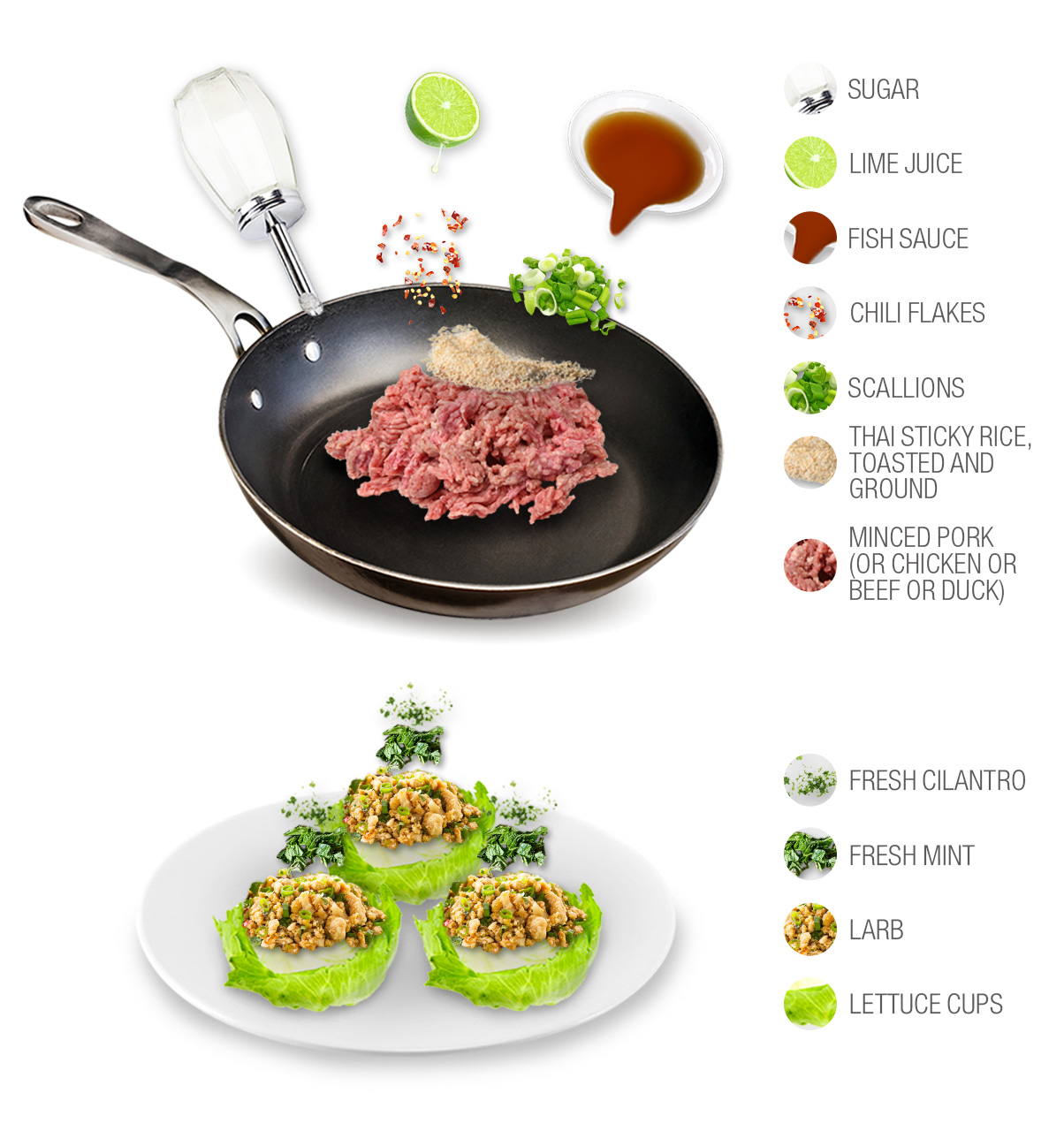Larb is a heavily seasoned meat salad that's garnished with freshly chopped herbs and khao khoua — toasted ground rice. Considered the unofficial dish of Laos, larb is consumed both in Laos and the bordering Isan, a region in Thailand.
The base of the dish is hand-minced meat, either beef, pork, chicken, duck, or fish, that can be raw or cooked, a souring agent - typically lime juice, and either fish sauce and/or padaek, a type of fermented fish sauce. The ingredients and variations of the basic recipe are endless, and similar dishes can be found throughout Southeast Asia.
MOST ICONIC Larb
View moreMAIN INGREDIENTS
This versatile Lao stew is traditionally associated with Luang Prabang. The dish usually combines chunks of meat with typical Laotian spices such as lemongrass, cilantro, dill, basil, galangal, and sakhan – the stems from wild vines which impart a peppery, spicy flavor to or lam.
Other ingredients include onions, garlic, and eggplants which make the base of the broth, while the dish is finished off with the addition of rice balls, different vegetables, and grilled meat, usually beef, water buffalo, pork, or chicken, although some less common varieties may also include fish.
Lard na is a stir-fried rice noodle dish, popular as local street food in Laos and northern Thailand. The dish is prepared with a rich sauce made with beef, pork, chicken or even tofu. The meat and noodles are accompanied by Chinese broccoli, carrots, mushroom, and chopped garlic.
After the vegetables have simmered in chicken stock, tapioca starch is added to thicken the gravy, along with yellow bean sauce, fish sauce, and soy sauce. The result is a filling and healthy dish that is enjoyed as comfort food, especially in the Chinese communities in Laos.
Seen dat (translated as seared meat) is a Lao style of barbecue that is made on a traditional griddle (similar to the ones used for Korean barbecue) and meant to be served communally on a sharing platter. The choice of meat are usually thinly cut strips of pork or beef, marinated beforehand or dunked into a sweet and savory dipping sauce, just before being grilled.
The specially-designed griddle allows the edges to be filled with a broth in which the vegetables, greens, and noodles are cooked. Bean sprouts, cabbage, scallions, mushrooms, and broccoli are the most commonly used sides. The dish is most often enjoyed in a family setting, on holidays and special occasions, since the griddle allows for several rounds of cooking.
MAIN INGREDIENTS
Mok kai is a traditional dish made by wrapping chopped chicken paste and an assortment of local vegetables in banana leaves. The chicken thighs (or other parts) are seasoned and coarsely chopped, then mixed with ground kaffir lime leaves, lemongrass, shallots, galangal, and red chilis.
The resulting combination is drizzled with fish sauce, molded to fit inside a banana leaf, and steamed. The mok kai are typically served hot alongside sticky rice, but they can also be placed in the freezer for later consumption. Other varieties may include black fungus, bamboo shoots, eggs, khao khua (ground roasted glutinous rice powder), galangal, coconut milk, and garlic.
TasteAtlas food rankings are based on the ratings of the TasteAtlas audience, with a series of mechanisms that recognize real users and that ignore bot, nationalist or local patriotic ratings, and give additional value to the ratings of users that the system recognizes as knowledgeable. TasteAtlas Rankings should not be seen as the final global conclusion about food. Their purpose is to promote excellent local foods, instill pride in traditional dishes, and arouse curiosity about dishes you haven’t tried.






